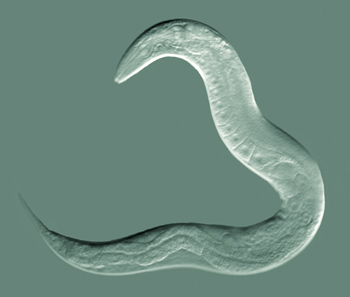
(Post Updated Monday, Sept. 21 with new image and links)
“Can we assure the safety of myriads of molecules? Can we use technological innovations in information science to learn from a legacy of scientific minds?” former Duke graduate student Rocky Goldsmith asked at the Sept. 11 Visualization Friday Forum.
Goldsmith currently works with The Exposure Dose Research Branch of the EPA's National Exposure Research Laboratory, mapping how the body absorbs and purges chemicals.
“An environmental chemical is not just the standard pesticide, but really everything around us,” Goldsmith said. He quoted environmental activist David Suzuki as saying “We all live downstream.” Distant actions can affect us in unseen ways.
Without actually testing on humans, Goldsmith and his colleagues must estimate chemical exposure results for humans by examining multiple exposure parameters: dosage, route of exposure (oral, dermal, inhaled), life stage sensitivity (infants or the elderly), complex chemical mixtures, and the effects of similar chemicals.
“We want to be able to extrapolate from exposure to dose,” Goldsmith said.
“If the body gets rid of it quickly, we don’t worry about as much. It all depends on the dose -- if you have enough water, you can die.”
Was there were a better way to visualize the available dosimetry data? According to Goldsmith, several factors motivated this exploration: easier target organ / tissue identification, more compact and portable format, and the removal of linguistic barriers for data interpretation.
Thus, Physical and Anatomical Visual Analytics (PAVA), an online interface for evaluating the extent of human exposure to chemicals. PAVA allows species and gender selection, and realtime updated anatomical representation of a human.
(Goldsmith says PAVA is not yet available to the public, "But our intention is to have it available by early next year. In the meantime we can generate biologically mapped data by request. goldsmith.rocky@epa.gov.)
(See the entire lecture)



